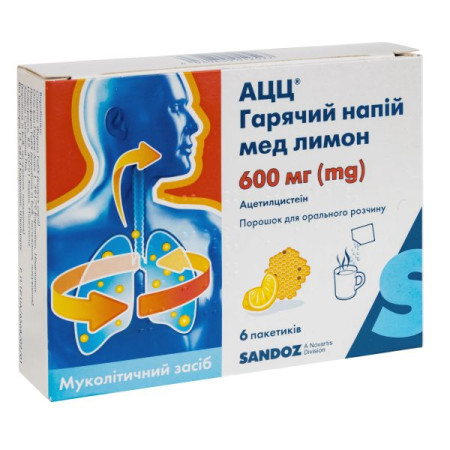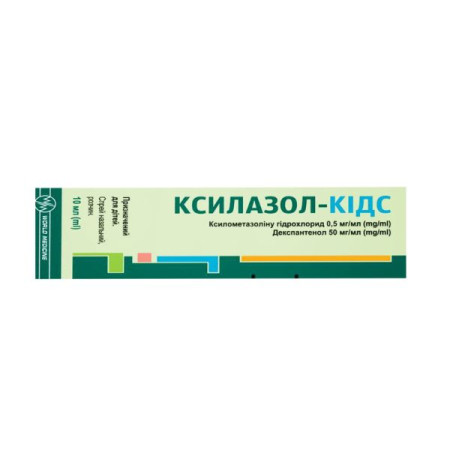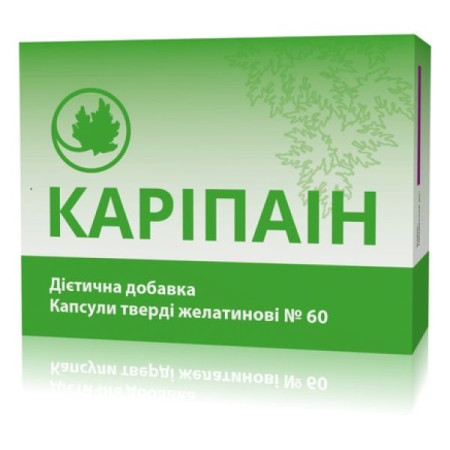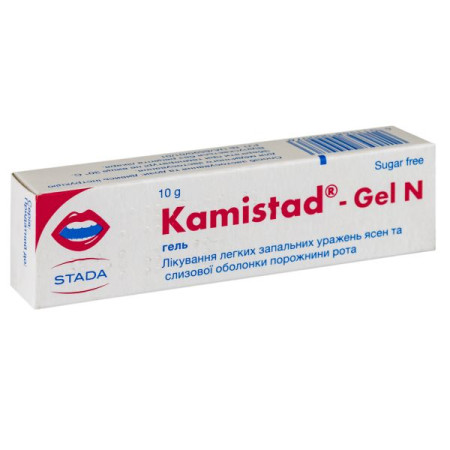Rialtris nasal spray dosed suspension 240 doses
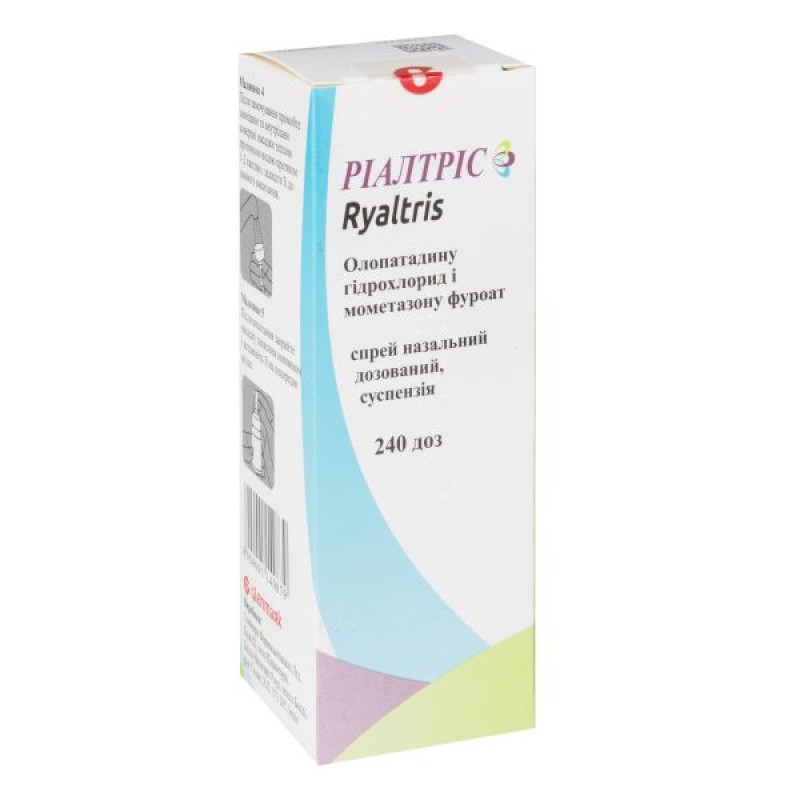
Instructions for Rialtris nasal spray dosed suspension 240 doses
Composition
active ingredients: olopatadine hydrochloride and mometasone furoate;
1 dose contains olopatadine hydrochloride 665 mcg equivalent to olopatadine 600 mcg and mometasone furoate monohydrate equivalent to mometasone furoate 25 mcg;
Excipients: microcrystalline cellulose and sodium carboxymethylcellulose; sodium hydrogen phosphate, heptahydrate; sodium carboxymethylcellulose; sodium chloride; benzalkonium chloride 50% solution; benzalkonium chloride; disodium edetate; polysorbate 80; hydrochloric acid; sodium hydroxide; water for injections.
Dosage form
Nasal spray, dosed, suspension.
Main physicochemical properties: white homogeneous suspension without lumps.
Pharmacotherapeutic group
Anti-edematous and other drugs for topical use in diseases of the nasal cavity. Corticosteroids. ATX code R01A D.
Pharmacological properties
Pharmacodynamics. Combined anti-edematous agent for topical use, containing olopatadine hydrochloride and mometasone furoate.
Olopatadine is a histamine H1 receptor antagonist. The antihistamine activity of olopatadine has been confirmed in isolated tissues, animal models, and humans.
Mometasone furoate is a synthetic corticosteroid for topical use that has a pronounced anti-inflammatory effect. The exact mechanism of action of corticosteroids in allergic rhinitis is still unknown. Corticosteroids demonstrate a wide range of effects on various cells, namely heparinocytes, eosinophils, neutrophils, macrophages, lymphocytes, as well as on inflammatory mediators (histamine, eicosanoids, leukotrienes and cytokines). The mechanism of anti-inflammatory and anti-allergic action of mometasone furoate is mainly associated with its ability to inhibit the release of mediators of allergic reactions.
Pharmacokinetics.
Absorption
After intranasal administration of 2 sprays in each nostril of Rialtris (total dose of 2660 mcg olopatadine hydrochloride and 100 mcg mometasone furoate) twice daily in patients with seasonal allergic rhinitis, the mean peak plasma concentration (Cmax) was 19.80±7.01 ng/mL for olopatadine and 9.92±3.74 pg/mL for mometasone furoate, and the mean systemic exposure at the indicated dosing regimen (AUC) was 88.77±23.87 ng/mL*h for olopatadine and 58.40±27.00 pg/mL*h for mometasone furoate. The mean time to reach peak concentrations of olopatadine and mometasone furoate after a single dose was 1 hour.
The systemic bioavailability of olopatadine and mometasone furoate following intranasal administration of Rialtris was estimated to be comparable to that of olopatadine and mometasone furoate administered separately as monotherapies.
Distribution
The binding of olopatadine to human serum proteins is moderate, approximately 55%, and is independent of drug concentration over the range of 0.1 to 1000 ng/mL. Olopatadine binds primarily to human serum albumin.
In vitro, the binding of mometasone furoate to plasma proteins is 98-99% at concentrations from 5 to 500 ng/ml.
Metabolism
Olopatadine is not extensively metabolized. Based on the plasma metabolite profiles following oral administration of [14C]olopatadine, at least 6 minor metabolites circulate in human plasma. Olopatadine accounts for 77% of the total peak radioactivity in plasma, and all metabolites together account for <6%. Two of these have been identified as olopatadine N-oxide and olopatadine N-desmethyl. In in vitro studies with cDNA-expressed human CYP isoenzymes and flavin-containing monooxygenases (FMOs), the formation of olopatadine N-desmethyl (MI) is catalyzed primarily by CYP3A4, while olopatadine N-oxide (M3) is catalyzed primarily by FM01 and FM03. Olopatadine at concentrations up to 33,900 ng/mL did not inhibit the metabolism of specific in vitro substrates of CYP1A2, CYP2C9, CYP2C19, CYP2D6, CYP2E1, and CYP3A4. The potential of olopatadine and its metabolites as inducers of CYP enzymes has not been evaluated.
Studies have shown that mometasone furoate undergoes extensive metabolism after oral administration and absorption to form several metabolites. No major metabolites have been identified in plasma. After in vitro incubation, one of the minor metabolites formed is 6β-hydroxymometasone furoate. In human liver microsomes, the formation of the metabolite is regulated by cytochrome CYP3A4.
Breeding
After a single intranasal administration of the combination of olopatadine and mometasone furoate, the mean elimination half-lives of olopatadine and mometasone furoate were 8.63 and 18.11 hours, respectively.
Olopatadine is primarily excreted in the urine. Approximately 70% of an oral dose of [14C] olopatadine hydrochloride is excreted in the urine and 17% in the feces. 86% of the drug dose excreted in the urine during the first 24 hours is unchanged olopatadine, with the remainder consisting of olopatadine N-oxide and olopatadine N-desmethyl.
After intravenous administration, the effective plasma half-life of mometasone furoate was 5.8 hours. The administered dose is excreted as metabolites primarily in the bile and to a lesser extent in the urine.
Pharmacokinetic studies of Rialtris in specific patient populations have not been conducted. The pharmacokinetics of the combination of olopatadine and mometasone furoate are expected to reflect the pharmacokinetic properties of the individual components, as the pharmacokinetics of this combination are similar to the pharmacokinetics of the individual components.
Liver failure
Specific pharmacokinetic studies of the combination of olopatadine and mometasone furoate in hepatic impairment have not been conducted. A small portion of the olopatadine dose is eliminated by metabolism.
Following a single inhaled dose of 400 mcg of mometasone furoate to patients with mild (n = 4), moderate (n = 4), and severe (n = 4) hepatic impairment, peak plasma concentrations of mometasone furoate ranging from 50 to 105 pg/mL were observed in only 1 or 2 patients in each group. Peak plasma concentrations were found to increase with the severity of hepatic impairment; however, the number of peak levels detected was small.
Based on data obtained with the individual components, dose adjustment of Rialtris is not required in patients with hepatic insufficiency.
Kidney failure
The mean Cmax values for olopatadine after a single intranasal administration were not significantly different between healthy volunteers (18.1 ng/mL) and patients with mild, moderate, and severe renal impairment (15.5 to 21.6 ng/mL). The mean AUC0-12 in patients with severe renal impairment (creatinine clearance <30 mL/min/1.73 m2) was 2-fold higher compared to healthy volunteers. In patients with severe renal impairment, the maximum plasma concentration of olopatadine at steady state was approximately 10-fold lower than that observed after administration of a higher oral dose of 20 mg twice daily, which was well tolerated.
The effect of renal insufficiency on the pharmacokinetics of mometasone furoate has not been studied in detail.
Based on data obtained with the individual components, patients with renal impairment do not require dose adjustment.
Age
The pharmacokinetics of Rialtris have not been studied in patients under 12 years of age. A population pharmacokinetic analysis in patients 12 years of age and older showed that age had no effect on the pharmacokinetics of olopatadine and mometasone furoate, the components of Rialtris.
Controlled clinical trials have shown that intranasal corticosteroids can cause a decrease in growth velocity in children. This effect was observed in the absence of laboratory evidence of hypothalamic-pituitary-adrenal (HPA) axis suppression, suggesting that growth velocity is a more sensitive indicator of systemic corticosteroid action in children than some commonly used tests of HPA function. The long-term consequences of this growth velocity suppression associated with intranasal corticosteroids, including the effect on final adult height, are unknown.
Use in elderly patients
Based on data from 145 patients aged 65 years and older and younger patients treated with Rialtris in placebo- and active-controlled studies, no overall differences in safety or efficacy were observed.
Gender and race
Based on a population pharmacokinetic analysis of Rialtris, it has been proven that gender and race do not affect the pharmacokinetics of olopatadine and mometasone furoate.
Indication
Seasonal allergic rhinitis.
Contraindication
Hypersensitivity to olopatadine hydrochloride, mometasone furoate or to any other component of the drug.
The presence of an untreated localized infection of the nasal mucosa.
Due to the inhibitory effect of corticosteroids on wound healing, patients who have recently had nasal septal ulcers, nasal surgery, or nasal trauma should not use Rialtris until they have fully recovered.
Interaction with other medicinal products and other types of interactions
Specific drug interaction studies have not been conducted with the fixed-dose combination of olopatadine hydrochloride and mometasone furoate nasal spray. Any drug interactions with this combination are expected to be similar to those with the individual components, as no pharmacokinetic interactions have been observed between olopatadine and mometasone furoate when used in combination.
Olopatadine: Drug interactions with hepatic enzyme inhibitors are not expected, as olopatadine is primarily excreted by the kidneys. Olopatadine does not inhibit the metabolism of specific substrates for CYP1A2, CYP2C9, CYP2C19, CYP2D6, CYP2E1 and CYP3A4 in vitro. Therefore, drug interactions resulting in inhibition of the cytochrome P450 system are not expected. Due to the moderate binding of olopatadine to plasma proteins (55%), drug-drug interactions due to displacement from plasma proteins are also not expected.
Mometasone furoate: Studies have shown that mometasone furoate is primarily and extensively metabolized in the liver to several metabolites in all species studied. In vitro studies have confirmed the primary role of cytochrome P450 (CYP)3A4 in the metabolism of this compound. Concomitant use with ketoconazole, a potent inhibitor of CYP3A4, may increase plasma concentrations of mometasone furoate.
Application features
Local effects
Nasal ulceration and nasal septal perforation have been reported following intranasal use of antihistamines.
Isolated cases of nasal septal perforation have been reported following intranasal use of corticosteroids.
Epistaxis has been reported following intranasal use of antihistamines and corticosteroids.
In clinical studies with intranasal mometasone furoate, isolated cases of localized fungal infection of the nose and pharynx (Candida albicans) were observed. If a fungal infection occurs, Rialtris should be discontinued and appropriate treatment initiated. Patients using Rialtris for several months or longer should be periodically examined for Candida infection or other signs of adverse effects on the nasal mucosa. No cases of Candida infection were reported in clinical studies with Rialtris.
Glaucoma and cataracts
Nasal and inhaled corticosteroids may cause glaucoma and/or cataracts. Therefore, periodic ophthalmological examination is necessary in patients with visual impairment or with increased intraocular pressure, glaucoma and/or cataracts in history.
Hypersensitivity reactions
Hypersensitivity reactions, including wheezing, may occur after intranasal administration of mometasone furoate. In such cases, therapy with Rialtris should be discontinued.
Immunosuppression
Patients treated with drugs that suppress the immune system are more susceptible to infections than healthy people. For example, chickenpox and measles are more severe in immunocompromised children and adults who are taking corticosteroids. Such patients require special attention and the use of antiviral drugs or vaccination. The effect of the dose, route, and duration of corticosteroid use on the risk of developing generalized infection is not yet known.
Mometasone furoate nasal spray should be used with caution or not at all in patients with active or latent tuberculosis infection of the respiratory tract, as well as in untreated fungal, bacterial, systemic viral infections, or herpes simplex infection with eye involvement.
Effects on the hypothalamic-pituitary-adrenal (HPA) axis
With prolonged use of intranasal corticosteroids, especially at high doses, systemic effects such as hyperadrenocorticism and adrenal suppression may occur. It is important that when a therapeutic effect is achieved, the dose of intranasal corticosteroids be reduced to the minimum effective dose that controls the course of the disease, in order to avoid the development of systemic side effects.
If signs of undesirable systemic effects appear, treatment with Rialtris should be gradually discontinued.
Concomitant use of intranasal corticosteroids with other inhaled corticosteroids may increase the risk of developing hypercorticism and/or suppression of the hypothalamic-pituitary-adrenal axis.
Transfer from systemic corticosteroid therapy to topical corticosteroid therapy may be associated with signs of adrenal insufficiency, and some patients may experience withdrawal symptoms (e.g., joint and/or muscle pain, dizziness, and depression). Patients who have been receiving long-term systemic corticosteroids and are transferred to topical corticosteroids should be closely monitored for the development of acute adrenal insufficiency in response to stress. In patients with asthma or other clinical conditions requiring long-term systemic corticosteroid therapy, too rapid a reduction in the dose of systemic corticosteroids may result in exacerbation of the symptoms of the underlying disease.
Impact on growth dynamics in children
Corticosteroids may cause growth retardation in children. It is recommended that growth be monitored regularly in children treated with intranasal corticosteroids for long periods of time.
Drowsiness
Patients treated with Rialtris should be warned about the dangers of certain activities that require increased concentration and coordination of movements, such as operating machinery or driving a car. The concomitant use of Rialtris with alcohol or other central nervous system depressants should be avoided, as additive impairment of concentration and additional central nervous system dysfunction have been reported in clinical studies.
During clinical trials, cases of drowsiness were reported after the use of Rialtris.
The drug Rialtris contains benzalkonium chloride, which may cause irritation of the nasal mucosa and bronchospasm.
When using the drug, avoid getting the spray in your eyes or mouth.
Do not count the sprays that are performed to activate the bottle for the first time.
Store the bottle with the drug in an upright position and with the protective cap closed.
Use during pregnancy or breastfeeding
No specific studies of the effects of Rialtris during pregnancy or breastfeeding have been conducted.
Use during pregnancy.
Animal reproduction and developmental studies have been conducted with olopatadine administered orally and mometasone furoate administered subcutaneously, orally, and topically. Animal studies have shown treatment-related adverse effects on the fetus and offspring following systemic exposure to olopatadine hydrochloride and mometasone furoate. The developmental defects in animals following systemic exposure to mometasone furoate are consistent with the known effects of corticosteroids.
Because animal reproduction studies are not always predictive of human response, Rialtris should be used during pregnancy only if the expected benefit to the woman outweighs the potential risk to the fetus.
Use during breastfeeding.
It is not known whether olopatadine hydrochloride and mometasone furoate are excreted in human milk. Olopatadine has been detected in the milk of rats following oral administration. It is not known whether topical intranasal administration would result in sufficient systemic absorption to result in detectable excretion in breast milk.
Since most drugs are excreted in breast milk, special caution should be exercised when prescribing Rialtris to breastfeeding women and the drug should be used only if the expected benefit to the mother outweighs the potential risk to the child.
Ability to influence reaction speed when driving vehicles or other mechanisms
During treatment with Rialtris, patients should be warned about the need to refrain from work that requires increased concentration and speed of reactions, such as operating machinery or driving vehicles.
Method of administration and doses
The drug is intended for intranasal use only.
Adults and children over 12 years of age: the recommended dose is 2 sprays in each nostril 2 times a day.
Using a nasal spray
Shake the bottle well before each use. Then remove the protective cap. Before using the bottle for the first time, press the dosing device 6 times in a row and release the spray into the air, holding the bottle as far away from the eyes and face as possible, until a uniform spray appears. If the nasal spray has not been used for more than 14 days, shake the bottle well before use and press the dosing pump-sprayer 2 times or until a uniform spray appears.
Before each use, the nose should be thoroughly cleaned of mucus. After cleaning the nose, the suspension is injected into each nostril, while the head should be kept slightly tilted downwards. After use, the spray tip should be wiped and covered with a protective cap.
Do not spray the spray into the eyes or directly onto the nasal septum (the wall between the 2 nostrils).
Do not blow your nose for 15 minutes after using the spray to ensure the medicine works. Do not tilt your head back after spraying to prevent the medicine from getting into your throat.
Cleaning the Rialtris dosing device when it becomes clogged
Do not try to clean the dosing device with a needle or other sharp object. You may damage the dosing device and get the wrong dose of medicine.
If the nozzle is clogged, carefully remove it by pulling it upwards.
Remove the protective cap and immerse the dosing device in warm water for 15 minutes.
After soaking, rinse the outer and inner surfaces of the nozzle with warm running water for 1-2 minutes and leave it to dry completely.
After drying, close the nozzle with the protective cap and replace it in its original place.
After cleaning the nozzle, read the instructions for using the nasal spray in the section “Method of administration and dosage” and prime the dosing device by spraying 2 times into the air. Close the spray tip with the protective cap. Rialtris is ready for use.
If re-cleaning is necessary, repeat the described procedure.
The dosing device should be cleaned at least once a week to prevent it from clogging.
Children
There is insufficient clinical experience with the use of the drug in children under 12 years of age, so it should not be used in patients in this age category.
Overdose
No cases of overdose with Rialtris have been reported. Accordingly, there are no data on the consequences of acute or chronic overdose. Rialtris contains a combination of olopatadine hydrochloride and mometasone furoate; therefore, the risks associated with overdose of the individual components described below also apply to Rialtris.
Olopatadine hydrochloride: Symptoms of antihistamine overdose may include drowsiness in adults and initially agitation and hyperactivity, followed by drowsiness in children. There is no specific antidote for olopatadine hydrochloride. Symptomatic and supportive treatment is recommended in the event of overdose.
Mometasone furoate: Due to the low systemic bioavailability and the lack of acute systemic effects associated with the drug in clinical studies, it is unlikely that overdose would require treatment other than observation. Intranasal administration of 1600 mg (8 times the recommended daily dose of mometasone furoate in Rialtris) daily for 29 days in healthy volunteers did not show an increase in the incidence of adverse reactions. In a study involving volunteers using single intranasal doses of 4000 mcg and oral inhalation doses of 8000 mcg, no adverse reactions were observed. Chronic overdose with any of the corticosteroids may result in symptoms of hypercorticism.
Side effects
The safety data described below reflect the use of Rialtris in 3062 patients with seasonal allergic rhinitis in clinical studies of 2 weeks duration.
Nervous system: dysgeusia - often; dizziness, lethargy, drowsiness, anxiety, insomnia - infrequently.
Infections and infestations: pharyngitis, respiratory tract infections - uncommon.
Respiratory, thoracic and mediastinal disorders: cough, nasal dryness, nasal discomfort, throat irritation, wheezing - uncommon.
Gastrointestinal: dry mouth, abdominal discomfort, vomiting - infrequent.
Skin and subcutaneous tissue disorders: rash, itching, contact dermatitis - uncommon.
After intranasal use of corticosteroids, in some cases, undesirable effects may occur, namely:
from the immune system: immediate-type allergic reactions (e.g. bronchospasm, dyspnea), anaphylactic reactions, angioedema;
From the organs of vision: glaucoma, increased intraocular pressure, cataracts, blurred vision.
In a long-term clinical safety study (52 weeks of treatment), 593 patients with perennial allergic rhinitis reported the following adverse reactions with Rialtris: allergic reactions, conjunctivitis, eye discomfort, diarrhea, nausea, constipation, headache, and fatigue.
Systemic and topical corticosteroids may cause the following undesirable effects (see section "Special warnings and precautions for use"): nasal mucosal ulcers, nasal septal perforation, epistaxis, impaired wound healing and development of localized fungal infection of the nose and pharynx (Candida albicans), glaucoma and cataracts, drowsiness, immunosuppression, hypothalamic-pituitary-adrenal axis suppression, including growth retardation in children.
Expiration date
3 years.
Storage conditions
Store at a temperature not exceeding 25 °C. Do not freeze. Do not refrigerate. Keep out of the reach of children.
Packaging
56, 120 or 240 doses in a polyethylene bottle. 1 bottle with a dosing pump-sprayer, closed with a cap, in a cardboard box.
Vacation category
According to the recipe.
Producer
Glenmark Pharmaceuticals Ltd. / Glenmark Pharmaceuticals Ltd.
Location of the manufacturer and its business address
1. Unit III, Village Kishanpura, Baddi-Nalagarh Road, Tehsil Baddi, Distt. Solan (HP) 173 205, India.
2. Plot No. B-25, MIDC, Shendra, Aurangabad, Maharashtra 431154, India.
There are no reviews for this product.
There are no reviews for this product, be the first to leave your review.
No questions about this product, be the first and ask your question.









